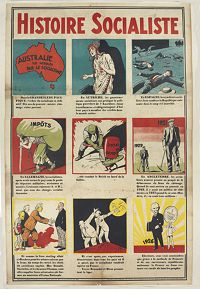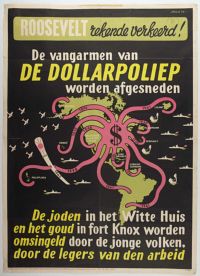Propaganda posters


Propaganda
At its most basic, propaganda is biased or misleading information circulated via some form of mass media to promote a political agenda or viewpoint.
Propaganda is deliberately not objective and is usually part of a larger psychological campaign to influence people toward a specific opinion. It may include outright lies or more subtle misinformation and censorship.
Propaganda works by tapping into emotions through images, slogans, and selective use of information, or control and censorship of the facts.
This is especially true if propaganda is being utilized by a government that is controlling the media by censorship or one that owns and runs media outlets, as was the case in the former Soviet Union and communist China.
Propaganda and Fake News
Propaganda has taken on a whole new twist with the rise of so-called fake news sites. At all times publishers were seeking for sales and created misleading or flat-out incorrect "news" or "maps" with sensational or controversial headlines.
Propaganda and political use
In the later nineteenth and twentieth centuries, the political potential
of cartographic shapes became used more widely and began to be used for
more blatantly propagandistic purposes. Map and globe can be used as
symbols for abstract ideas because they are familiar to the masses and
they harbor emotive connotations.
Maps are often incorporated as a symbolic element in a larger design
or are used to provide the visual framework on which a scenario is
played out.
Fred W. Rose created two propaganda posters depicting the British
general election in 1880 in which he used the map of England, "Comic Map
of the British Isles indicating the Political Situation in 1880" and
"The overthrow of His Imperial Majesty King Jingo I: A Map of the
Political Situation in 1880 by Nemesis.".
He was also the creator of the 1899 "Angling in troubled waters".
Henri Dron used the figure of the world map in the 1869 propaganda poster, "L'Europe des Points Noirs."
Soviet poster propaganda
Soviet poster propaganda after WWI was a constructivist-dominated design period, with bold reds and blacks and a strong emphasis on thick lines, bold sans-serif type and geometric forms.
Later, design in the USSR moved toward Socialist Realism and the accurate rendering of people, places and objects.
Early thematic content included defending the newly established state and the encouragement of enlistment for the armed forces.
Over the decades, the content would diversify and become rich with allusion and more complex meanings. General poster and propaganda themes included: families,
children, the benevolence of Soviet leadership and the threat from foreigners/capitalism, the space race, arms race and quest for athletic /
Olympic supremacy, and other manifestations of the Cold War rivalry with the United States.
The posters were printed in the hundreds of thousands. They propagated the ideologies of Lenin, Stalin,
the communist ruling party, and abstract ideas and subjects of a generally positive nature.